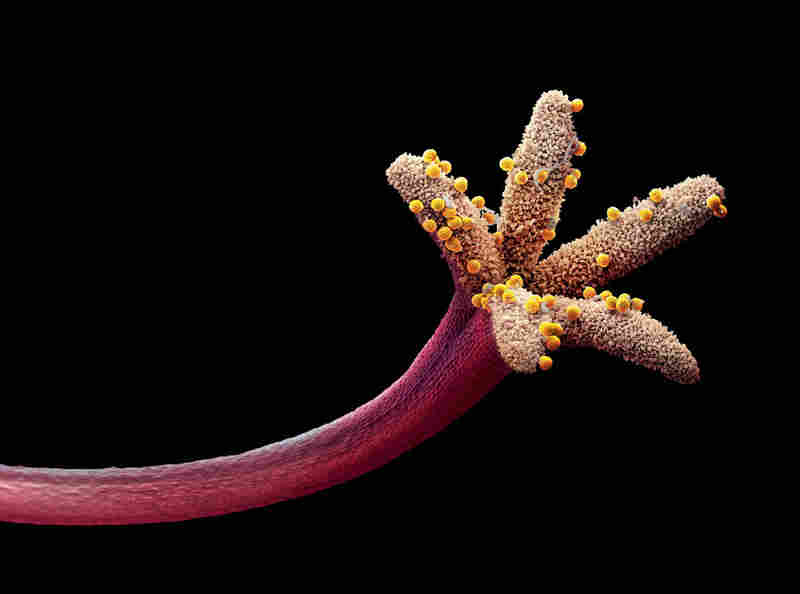In this How to Grow Cannabis article, Growers Network covers some technical terms you should know if you want to sound like professional talking about your plants’ flowers.

In a few of our previous “How to Grow Cannabis” articles, we talked about propagating your plants and genetics through seeds. Today we’re going to walk through some of the basics of sexual reproduction in plants to see how we get to those seeds -- and potentially even make some of your own.
For this article, we’ll be focusing primarily on Cannabis plants, which are Angiosperms, or flowering plants. Cannabis can be male, female, or hermaphroditic. As a grower, it’s generally best to have female-only plants. As a breeder, you may want both sexes, or you may want all three, depending on your needs.
Terms
Like any good science, there are all sorts of terms involved in plant reproduction. Let’s go over the important ones and explain what they are.
General Terms
- Dioecious: A plant species that exclusively has male or female plants on individuals. Plants from dioecious species do not contain hermaphrodites. Cannabis is not dioecious. Pronounced as “Dye-eesh-us”
- Flower: The reproductive structure of a flowering plant. Flowers can contain male parts, female parts, or both. In Cannabis, the flower can also be called the “Cola”
- Hermaphrodite (Abbrev: Herm): A plant that exhibits both male and female body parts, typically in the same flower. In Cannabis, hermaphroditic plants typically arise in a response to unusual stressors in their environment. There are a variety of different terms that can refer to this condition, although historically this is the most common one. Here are a few other terms that refer to the same thing:
- Bisexual
- Androgynous
- Monoclinous
- Synoecious
- Monoecious: A plant species whose flowers contain both male and female parts. Cannabis is not monoecious. Pronounced as “Mon-o-eesh-us”
- Subdioecious: A plant that is typically dioecious, but sometimes exhibits hermaphroditic flowers under certain circumstances. Cannabis is subdioecious.
Flower Parts

- Anther: The portion of the male stamen that produces pollen.
- Carpel: The female portion of the flower. Contains the ovary, stigma, and style. Sometimes called the pistil or the gynoecium.
- Calyx: Sepals that have fused together. Cannabis typically has calyces, not sepals, and the calyces are where a majority of the trichomes are found.
- Corolla: All petals of a flower are called the corolla.
- Ovary: The larger female structure holding ovules and connecting to the style and stigma.
- Ovule: Individual eggs held in the female portion of the flower.
- Perianth: A term used to describe both corolla and calyx combined.
- Petal: The colorful portion of a flower designed to attract pollinators.
- Sepal: Sepals are leaves underneath the petals. They are typically green. Their main role is to protect the flower before it opens.
- Stamen: The male portion of a flower. Stamen is made up of the anther and stalk, and produces pollen. Typically looks like a thin filament with a bulbous end. In Cannabis, these look like grapes attached to a stem.
- Stigma: The female portion of a flower that collects pollen.
- Style: The “pollen tube” that connects the stigma to the ovaries.
Function
This seems relatively simple, right? Pollen combined with an ovary should result in a seed. And you’re correct!
But there’s a couple other things we should discuss when it comes to the sexual reproduction of Cannabis. For one thing, Cannabis is typically wind-pollinated. That means that neither mammals nor insects need to come along to spread pollen -- a simple breeze is sufficient. This is why you have to be careful to separate your male and females plants in the grow, because otherwise you’d get all sorts of crazy plant sex from simply having fans.

Another thing we should mention is that it’s not always apparent from the get-go which Cannabis plants are male and which plants are female. It’s only when the flowers start to form and you can see stamens or pistils that you can tell which plants are which. And if you have a hermaphroditic plant (exhibiting both male and female parts), you should go back through your notes and try to figure out why that’s happening.
Conclusion
We hope that helped clear up some confusion about reproduction in Cannabis. In a future article, we’ll go over the practical concerns of how to intentionally breed specific plants with each other and some of the tools you’ll need.
Keep your eyes peeled as we move into propagation!
10 Best Gift Ideas for Cannabis Connoisseurs and Growing Aficionados (2022)
December 7, 2022Developing and Optimizing a Cannabis Cultivation System
December 14, 2021Dealing with Insomnia: How Can CBD Help?
December 10, 2020Your Guide to Sleep and CBD
December 7, 2020
Do you want to receive the next Grower's Spotlight as soon as it's available? Sign up below!

Do you have any questions or comments?

About the Author
Hunter Wilson is a community builder with Growers Network. He graduated from the University of Arizona in 2011 with a Masters in Teaching and in 2007 with a Bachelors in Biology.